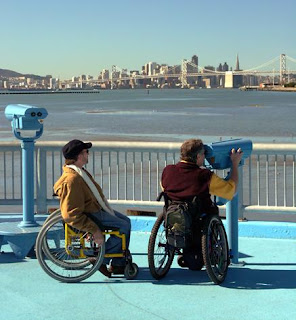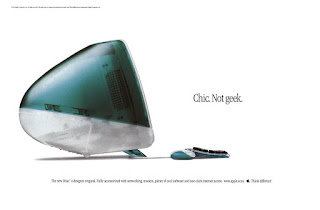"… to be really effective you have
to be able to sense the brand. You may
even be able to touch it and feel
it. So that it manifests the core idea...." Wally Olins
The
concept of branding is intrinsically linked with advertising, marketing and
playing on the subconscious aspirations of the consumer.
A
brand can be a product, a person or a logo – anything that can be bought and
sold, as an idea or artefact, can be branded.
Branding
is a global culture fuelled by consumerism and the need for people to
categorise their lifestyles, likes and dislikes through buying into particular
products.
It is
evident that brands possess values that distinguish them from their
competitors.
It is
interesting to consider why we buy a branded product over a supermarket named
equivalent at half the price.
What makes
us believe that the contents of the tin are of a better quality?
No
brand can appeal to everyone.
Through
marketing and advertising, the image of the brand is identified and sold to the
public.
The
brand can be defined by analysing its
core values through understanding the
product, communicating and
understanding the
right consumer audience and finally
matching the
product to the
physical environment.
In
retail terms, the store is built around the concept of the brand and the
products sold within it. The interior emulates the aspirations of the brand
values and qualities to enhance the relationship between the space and the message.
Everything
about the brand must be consistent – from the associated colour and graphic
style to the product range, whether diverse or focused, and the interior.
This
consistency makes the message stronger and re-affirms the brand’s worth.
Although brand stores can be seen
throughout the world in different formats, there are particular mechanisms in
place for promoting a new concept or to consolidate a brand experience on
the global market.
This usually happens in major retail positions, to allow access to the larger proportion of the world’s consumers.
These mechanisms can be categorised as
concept stores, flagship
stores and lifestyle stores.
The
principles of a BRAND DESIGN can be examined under the following headings:
1.Essence
The
essence identifies what is at the heart of the business and the nature of the
work. These are the most important features of the organisation. (ABC is a
computer company)
2.Values
The
term ‘brand values’ can be explored through what the organisation’s morals and
standards are and how they manifest themselves in the brand. (ABC is a computer
company that gives free computer to schools)
3.Image
The
brand image is one of the most important aspects of brand development and is
paramount in showing the essence and values of the organisation to the world
through visual means. (ABC is a computer company which is innovative and young
consumers oriented, it is hip and cool)
4.Big
ideas The
big ideas demonstrate what the brand sets out to achieve. (ABC is a computer
company which distributes free office programs and education related software
to students)
5.Cash
generator Behind
every brand is the ambition to make money. It is fundamental to know how this
will happen. (ABC is a computer company which offers four year payment
opportunity to students)
6.Strange
attractor The
success of many brands is in the unknown and the additional offers that can be
made under a brand. It is important to question what else people use/need the
brand for. (ABC is a computer company which openly supports diversity and
manifests this with their non-sexist non-racist commercials and in various other ways)
7.Culture
Who
is the market/consumer/user and what does it feel like to be part of this
culture? (young, educated, free thinking people)
CASE STUDY:
Let's look at Apple Store space design
This
exciting, fast-moving, creative industry, commerical design is one of the main areas of interior
design.
Thank
you for reading.
M.Des.
Can Kulahcioglu






































